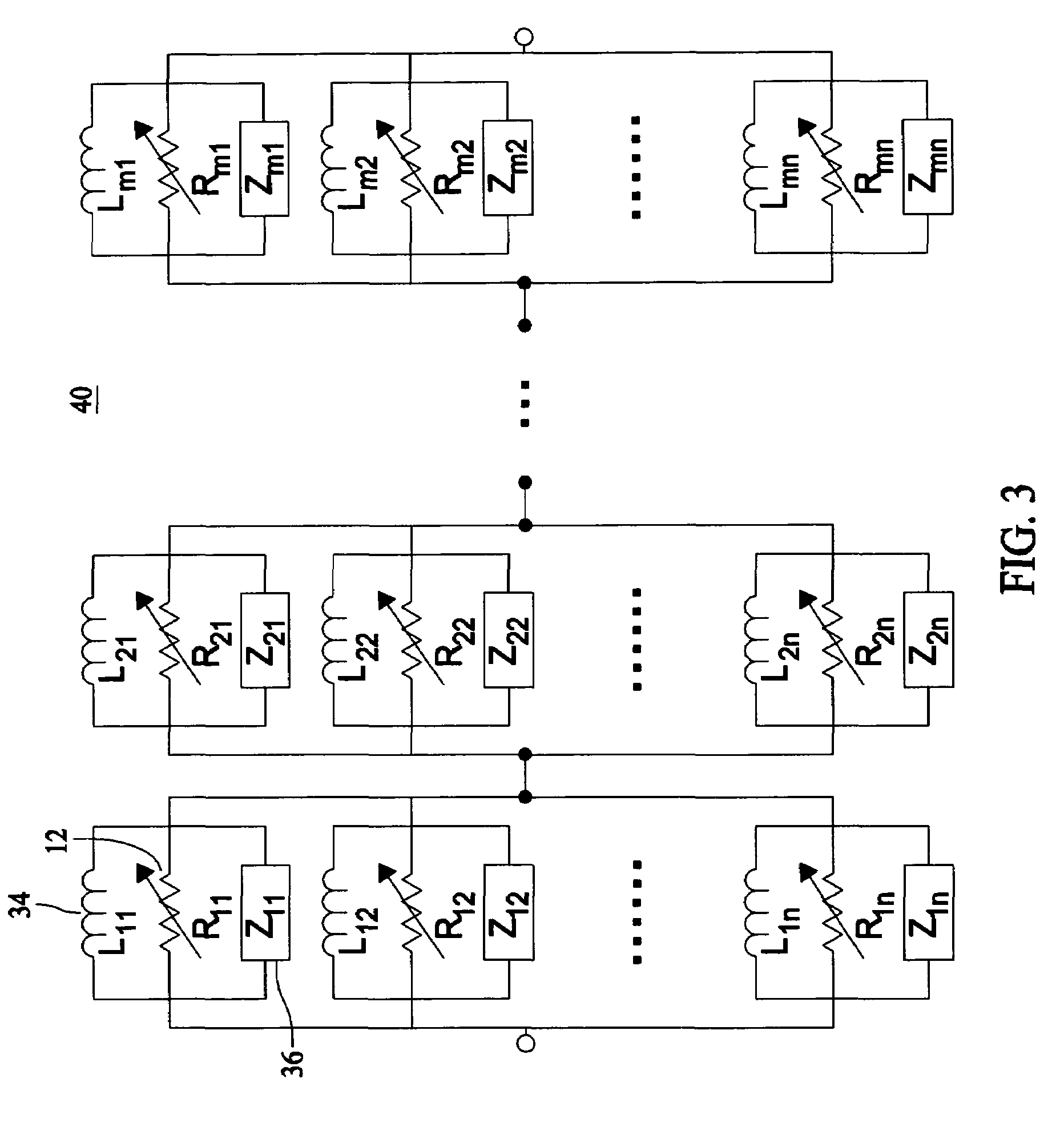Self-triggering superconducting fault current limiter
a fault current limiter and superconducting technology, applied in the direction of emergency protective circuit arrangements, emergency protective arrangements for limiting excess voltage/current, electrical equipment, etc., to achieve the effect of significant flexibility and fast quenching
- Summary
- Abstract
- Description
- Claims
- Application Information
AI Technical Summary
Benefits of technology
Problems solved by technology
Method used
Image
Examples
Embodiment Construction
[0020]U.S. patent application Ser. No. 10 / 877,838, entitled “Superconducting Matrix Fault Current Limiter With Current-Driven Trigger Mechanism”, filed on Jun. 25, 2004, assigned to the assignee of the present invention, which is a Continuation-In-Part of U.S. patent application Ser. No. 10 / 609,969, filed on Jun. 30, 2003, are both herein incorporated by reference in their entirety. These applications describe MFCL designs which are modular and scalable that functions as a “variable impedance” using components made of superconducting as well as conventional electrically conductive materials.
[0021]FIG. 1 is a simplified schematic single phase line diagram of a three-phased alternating current (AC) electrical power system 10 of the present invention under a short circuit fault condition. This diagram illustrates the system power source 30, line resistance 28, line inductance 26, and load impedance which usually comprises a resistance 22 and / or an inductance 24. In series with system p...
PUM
 Login to View More
Login to View More Abstract
Description
Claims
Application Information
 Login to View More
Login to View More - R&D
- Intellectual Property
- Life Sciences
- Materials
- Tech Scout
- Unparalleled Data Quality
- Higher Quality Content
- 60% Fewer Hallucinations
Browse by: Latest US Patents, China's latest patents, Technical Efficacy Thesaurus, Application Domain, Technology Topic, Popular Technical Reports.
© 2025 PatSnap. All rights reserved.Legal|Privacy policy|Modern Slavery Act Transparency Statement|Sitemap|About US| Contact US: help@patsnap.com



